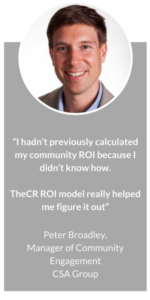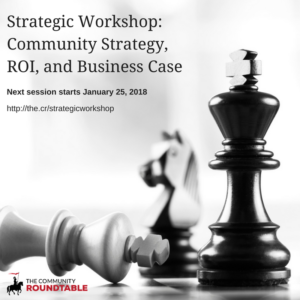Put 100 community program leaders in a room and ask them what their stakeholders most want from them – and “proof of community value” will be at the top of the list. It’s a rare organization that just “gets” that community is strategically important without numbers to back it up.
Communities need to define and measure value and then take the next step to translate that into a financial return on investment (ROI) if they expect to have continued investment from executives and stakeholders. Some community experts will say that you can’t calculate ROI and it doesn’t matter if their is a strong sense of community.
Try telling that to your CFO.
Besides being incorrect, this line of thinking hurts both community managers and their communities. Too few communities are measuring their value and ROI and, for better or worse, it is how organizations evaluate investments and opportunity. In a climate where executives are interested but wary, it’s a missed opportunity for engagement, support, and influence.
The SOCM 2017 research showed that most communities still struggle to translate the value they are seeing into financial terms. Only about a third of communities said they could measure community value, and only 1-in-10 said they could measure ROI on their own. Of those that can, though, a majority report positive financial returns – with returns as high as 10x, 20x or more in some cases.
Guess what? The Community Roundtable can help.
For the first time ever we are offering our Strategic Community Workshop: Community Strategy, ROI, and Business Case as a facilitated and interactive online course. We’ve worked with some of the world’s most successful communities to drive their strategic vision – and help them calculate the value of their community in a way gets executive attention. Now you can join us for a six-week intensive course, where you’ll walk away with:
- a working community strategy
- a draft of your community business case
- an estimated ROI figure for your community
- a high-level roadmap for your community program
You’ll use these strategic assets to prove real community value, get stakeholder buy-in, and make the case for expanded community budgets. That’s a lot of value for six-hours of class time.

